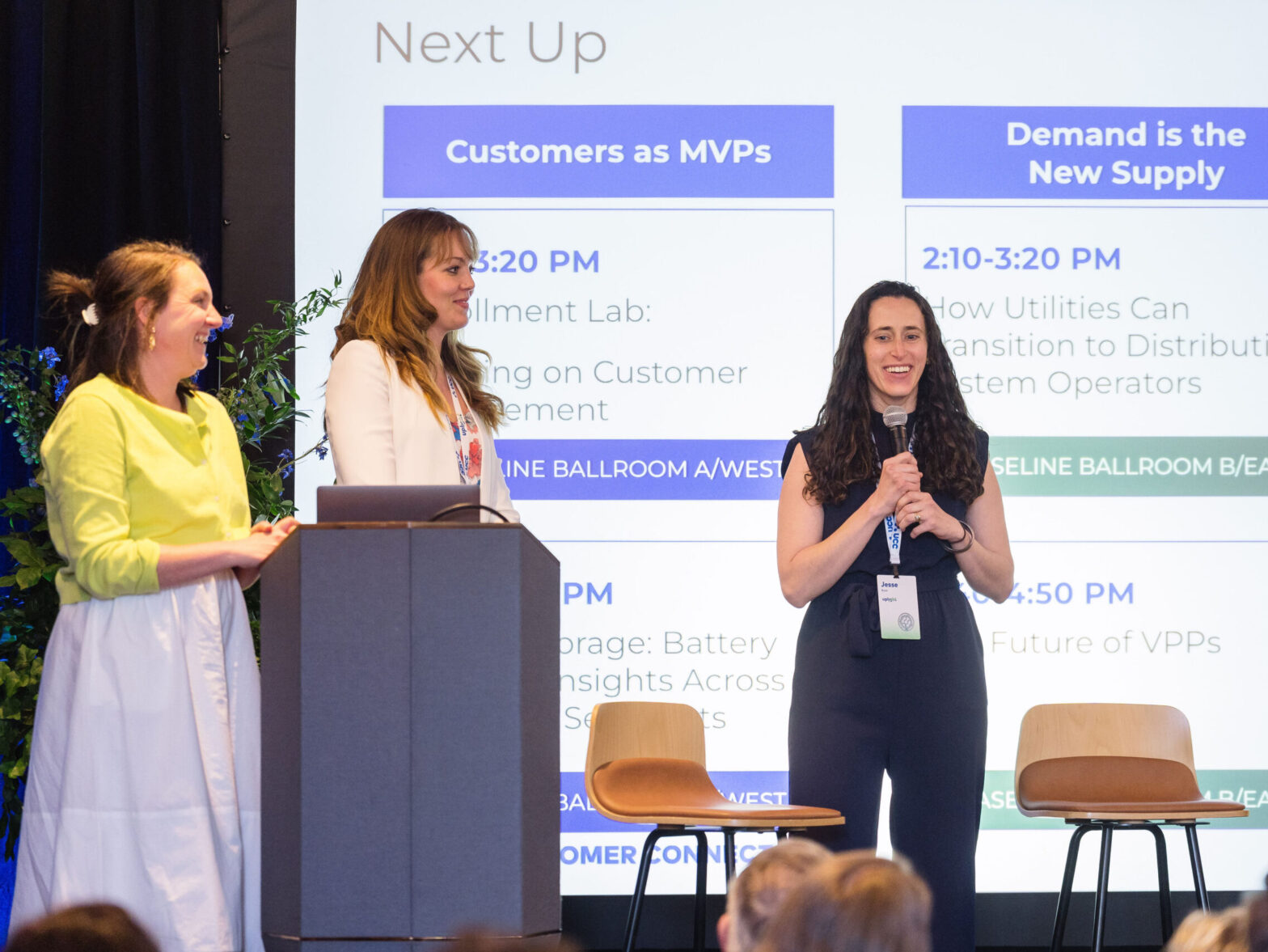Recent research by Cornell indicates that smart thermostats – present in over 16% of U.S. homes – can cause additional stress on the grid by initiating unexpected peak demand when a large number of these devices are synchronized to begin cooling or heating at the same time. This peak demand can cause unintended system-level consequences for the grid. The problem isn’t smart thermostats or other smart devices, but rather the sophistication in which these assets are deployed.
The Challenge
Smart thermostats have default manufacturer settings that are pre-programmed with the device. When customers install a smart thermostat in their home, these “out of the box” default schedules are the settings used to control the temperature settings in the home. These settings can also be used by thermostat manufacturers to manage a customer’s temperature and energy usage for demand response (DR) programs.
On an individual household level, these default settings don’t pose a threat to the grid. Rather, these smart devices can provide energy savings for customers (and to their utility) who otherwise wouldn’t see savings with a non-programmable thermostat. But when a large enough number of these smart thermostats are set on the same default schedule, the synchronization of these devices can lead to significant – and perhaps unexpected – electrical load on the grid. This is especially relevant for utilities with winter peak heating demand as homes start heating in the early morning.
How to Solve This
Utilities can proactively address these load synchronization threats by becoming more sophisticated in how they manage behind-the-meter customer assets. One way that Uplight has partnered with utilities to provide better load flexibility via smart thermostats is by deploying our patented optimization algorithms. Unlike out-of-the-box manufacturer schedules that take a “one size fits all” approach, our optimization algorithms create a tailored energy profile that is personalized to the customer based on the thermal dynamics in their home and their behavioral and lifestyle preferences.
Whereas a default schedule may start heating or cooling all customer homes at the same time, an Uplight-managed schedule would pre-condition these same homes at different times depending on customer preferences and the grid outcomes that a utility is trying to meet.
The result? Our algorithm delivers greater load shift for utilities, with 40% uplift compared to eco+, and 20% uplift over Nest devices with no snapback after DR events. For utilities, more personalized customer load management translates not only to greater load shift, but also reduces the risk of unintended load synchronization from large groups of customers on the same schedule.
From the customer’s perspective, personalization results in a more comfortable experience during DR event windows and around-the-clock. Customers whose homes are managed using our optimization techniques have fewer overrides during DR events, and less than 2% unenroll from demand response programs, compared to 20% as the industry norm.
Utilities who have utilized Uplight’s optimization techniques can achieve greater load flexibility while also providing bill savings to customers. For example, Uplight shifts customers’ loads outside of time of use windows, optimizing their pre-heating and cooling schedules to maintain customer comfort for Alabama Power customers in the Smart Advantage program. The program achieved between 9% to 14% peak load shift on average across the six-hour peak window compared to 1-2% of average load shift in standard time of use (TOU) programs, while reducing customer bills an average of $80-$200 per year.
Looking Ahead
The need for greater load flexibility using behind-the-meter assets is only increasing. There is a significant opportunity to grow deployment of smart thermostat devices within the U.S. as purchases of smart thermostats are moving beyond the early adopters into the mainstream. As more smart thermostat devices – as well as other types of behind-the-meter devices such as EV Level II Chargers – come online, utilities need to think more holistically about how to manage customer assets for grid benefit. Smart devices are a powerful tool for energy optimization, but must be coupled with personalized algorithms to reduce stress and improve grid reliability.




